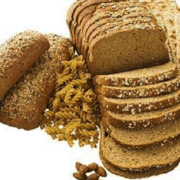The Greening Of Chiang Mai – The Sustainable Compromise
-
Recently Browsing 0 members
- No registered users viewing this page.
-
Topics
-
-
Popular Contributors
-
-
Latest posts...
-
45
Report Cannabis Advocates to Rally July 7 Against Recriminalisation Plans
Woodstock 1969 did have a few deaths Woodstock 1999 had a lot of violence. Woodstock 1969 theme was love and peace, a very different era to 2025.. can't really compare. https://www.frontiersin.org/journals/psychiatry/articles/10.3389/fpsyt.2022.746287/full -
47
Crime Swedish Man Beaten by Girlfriend & Mob of 10 Men in Soi Buakhao, Pattaya
Off-topic nonsense...............🤥 -
47
Crime Swedish Man Beaten by Girlfriend & Mob of 10 Men in Soi Buakhao, Pattaya
I think next time he should try looking for a better class of woman, that one didn't work out well at all. -
20
UK Reform would be largest party if general election held today
Working class voters thought Starmer was better than any Tory being in control.........😱 -
153
Too late, baby - Muslim Mayor of NYC
If it weren't for us "southern bible thumping nutjobs" who are the apple of God's eye, NY would already have been destroyed. God's love for HIS PEOPLE is the only thing holding back the wrath of God on the US of A. If you have never received Jesus Christ as your personal Lord and Savior, then you are NOT in the family of God, and your father is Satan.....forever changing our minds about what we believe because someone has told us something different or has cleverly lied to us and made the lie sound like the truth. John 3:36 says "He that believeth on the Son hath everlasting life: and he that believeth not the Son shall not see life; but the wrath of God abideth on him". -
24
Is Sharia Law next?
Agree. Once getting a taste of religious freedom, many Muslims, especially women, do not favor sharia law.
-
-
Popular in The Pub













Recommended Posts
Create an account or sign in to comment
You need to be a member in order to leave a comment
Create an account
Sign up for a new account in our community. It's easy!
Register a new accountSign in
Already have an account? Sign in here.
Sign In Now